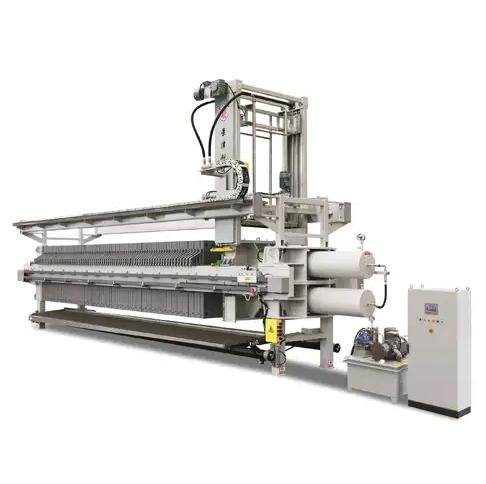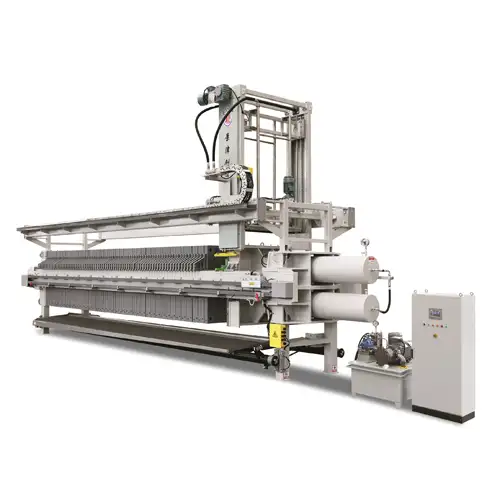How does a wastewater treatment filter press reduce the volume of waste?

A wastewater treatment filter press reduces the volume of waste through a process that separates solids from liquids.
Here’s how it works:
-
Sludge Input: The filter press receives a slurry of wastewater that contains both liquid and solid waste materials.
-
Pressing Mechanism: The slurry is pumped into the filter press, where it is contained between filter plates. These plates are covered with filter cloths that allow liquids to pass while retaining solids.
-
Filtration: As pressure is applied, the liquid effluent is forced out through the filter cloths, leaving behind concentrated solid waste, known as cake.
-
Cake Formation: Over time, the solids accumulate and form a thick cake. This cake is significantly drier than the original sludge, which reduces its volume.
-
Discharge and Disposal: Once the filtration process is complete, the solid cake is removed from the press. This concentrated solid waste is easier to handle, transport, and dispose of, compared to the original slurry.
-
Liquid Effluent: The liquid that is separated can be further treated or discharged, depending on regulatory requirements.
By effectively separating solids from liquids, a filter press minimizes the volume of waste, making it more manageable and cost-effective for disposal or further processing.

- Art
- Causes
- Crafts
- Dance
- Drinks
- Film
- Fitness
- Food
- الألعاب
- Gardening
- Health
- الرئيسية
- Literature
- Music
- Networking
- أخرى
- Party
- Religion
- Shopping
- Sports
- Theater
- Wellness
- IT, Cloud, Software and Technology


